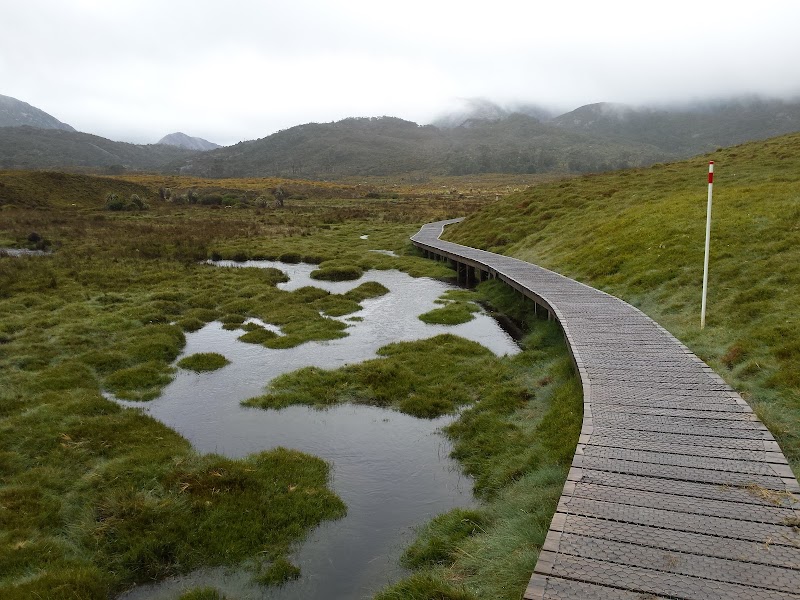
Savoring Stanley Seafood Festival: Tasmania’s Coastal Feast and Festivity
Experience the Stanley Seafood Festival in Tasmania—a vibrant weekend where fresh ocean flavors meet coastal community spirit. Discover local seafood, cooking demos, and family activities against the striking backdrop of The Nut and Tasmania’s rugged west coast.
Arrive Early for Best Selection
Popular seafood stalls and seating fill quickly; arriving mid-morning helps beat the crowds and secures prime tasting spots.
Dress for Changing Weather
The coastal climate shifts rapidly—layered clothing and windbreakers keep you comfortable as sea breezes challenge the warmth of the sun.
Bring Reusable Water Bottle
Hydration stations are available but sustainability matters; reduce waste by carrying your own refillable bottle.
Wear Comfortable Footwear
Festival grounds have a mix of paved and gravel surfaces; sturdy, comfortable shoes ease movement and protect against uneven terrain.
Savoring Stanley Seafood Festival: Tasmania’s Coastal Feast and Festivity
Each summer, the coastal town of Stanley, Tasmania, transforms into a vibrant celebration of the sea’s bounty with the Stanley Seafood Festival. This lively event draws locals and visitors alike to a historic fishing village framed by the looming presence of The Nut, a dormant volcanic plug that watches over the harbor with steady calm. The festival is more than just food; it’s a hands-on encounter with Tasmania’s renowned seafood culture, set against the rugged backdrop of the island’s wild west coast.
Held over a weekend between December and January, the Stanley Seafood Festival offers a practical blend of tasting, learning, and exploring. Visitors stroll through bustling stalls where fresh oysters, scallops, abalone, and king prawns invite eager fingers and hungry mouths. Cooking demonstrations by celebrated chefs provide insight into preparation techniques that highlight ingredient freshness and regional subtleties. The sea itself doesn’t stay silent—it tosses crisp breezes onto the faces of attendees, a reminder of the ocean’s constant presence.
Beyond food, the festival grounds offer live local music and artisan markets, capturing a sense of community firmly rooted in place. There’s a distinct energy here, a pulse driven by the fishing boats bobbing just offshore and the stories shared by those who know the sea best. For families, the festival brings kid-friendly activities and educational displays explaining sustainable fishing, an essential topic given the region’s commitment to preserving its marine life.
From a practical perspective, arriving early in the day ensures better access to popular seafood stands and seating. Public transport options from nearby Devonport make getting here straightforward, but car parking can fill quickly. Attendees should be prepared for changeable coastal weather—sun protection combined with windbreakers proves wise. Comfortable footwear benefits those wandering the uneven, sometimes gravelly festival pathways. Hydration stations are abundant, but bringing a refillable bottle is a sustainable choice.
For those eager to extend their adventure, the rugged trails around Stanley, including the climb to The Nut summit, wait beyond the festival. This contrast between the lively festival atmosphere and the stoic natural landscape creates a rounded experience: part celebration, part outdoor challenge. The Stanley Seafood Festival invites you not just to taste Tasmania’s ocean harvest but to appreciate a living coastal culture fiercely tied to its environment and history.
Nearby Trips
All Adventures
Boat Charters
Water Activities
Adventures near Stanley, Tasmania
Discover the unique and memorable adventures that make Stanley, Tasmania special.
Frequently Asked Questions
When exactly does the Stanley Seafood Festival take place?
The festival typically happens over a weekend between late December and early January, coinciding with the peak summer period in Tasmania.
Is the festival suitable for families with children?
Yes, the festival includes kid-friendly activities and educational stations about marine life and sustainable fishing, making it a family-friendly outing.
What types of seafood are featured at the festival?
Expect to find fresh oysters, scallops, abalone, crayfish, and king prawns sourced from local waters, highlighting Tasmania’s diverse ocean harvest.
Are dogs or pets allowed at the festival?
Pets generally aren’t permitted to maintain hygiene and safety standards around food areas. Check the festival’s official guidelines before attending.
Can visitors learn how to cook seafood at the festival?
Yes, professional chefs host live cooking demonstrations, offering practical techniques and tips for preparing fresh local seafood.
What public transportation options serve the festival?
Devonport provides the nearest major public transport hubs; shuttle services or taxis are recommended, as parking near the festival can fill early.
Recommended Gear
Windbreaker or waterproof jacket
Protects against sudden coastal winds and light rain during outdoor festival events.
Comfortable walking shoes
Ensures safe and comfortable movement across paved and gravel festival areas.
Reusable water bottle
Helps stay hydrated and supports environmentally responsible practices.
Sunhat and sunscreen
Essential for protection against strong Tasmanian sun exposure during long outdoor hours.
Local Insights
Hidden Gems
- "The Nut’s lesser-used walking tracks offer quieter vantage points above the town with sweeping coastal views."
- "Old Stanley fishing wharf nearby provides a quiet space for reflection and spotting foraging seabirds."
Wildlife
- "Seabirds like pied oystercatchers and cormorants actively fish the harbor waters during the festival."
- "Keep an eye out for dusky woodswallows and occasional echidnas around the town’s fringes, bringing a touch of wilderness close."
History
"Stanley’s roots as a 19th-century fishing village still color the town’s charm. The festival honors a legacy of local fishermen who have harvested these bountiful waters for generations."
